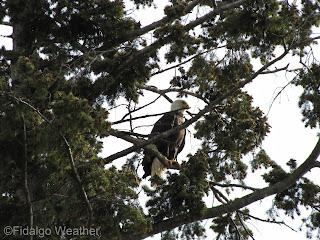Rain!

8:00 AM, Temp 53.7° F, Dew Pt 51.4° F, Baro 30.00 in, Wind SSE 9 mph Gust 15, Humidity 92% August wraps up with some welcome rain. This will help to revive dormant lawns and refresh flower beds. When you live by the sea, it never just rains. It always arrives with wind and waves. I am listening to it whistle in the eaves as the rain beats against the windows. It is averaging around 15 mph sustained now with gusts in the 20's. If the pattern holds, the wind will settle down in a bit leaving just a gentle rain. Warm, sunny weather is scheduled to return later in the week. I think Northwest people are inured to the rain and invigorated by it. We know how to dress for it, and in winter, an umbrella is a constant companion. We do things in the rain, like camping, gardening and skiing, that others would never consider. It is said that Eskimos have many words for snow, and Hawaiians for lava. Northwesterners undoubtedly hav...










